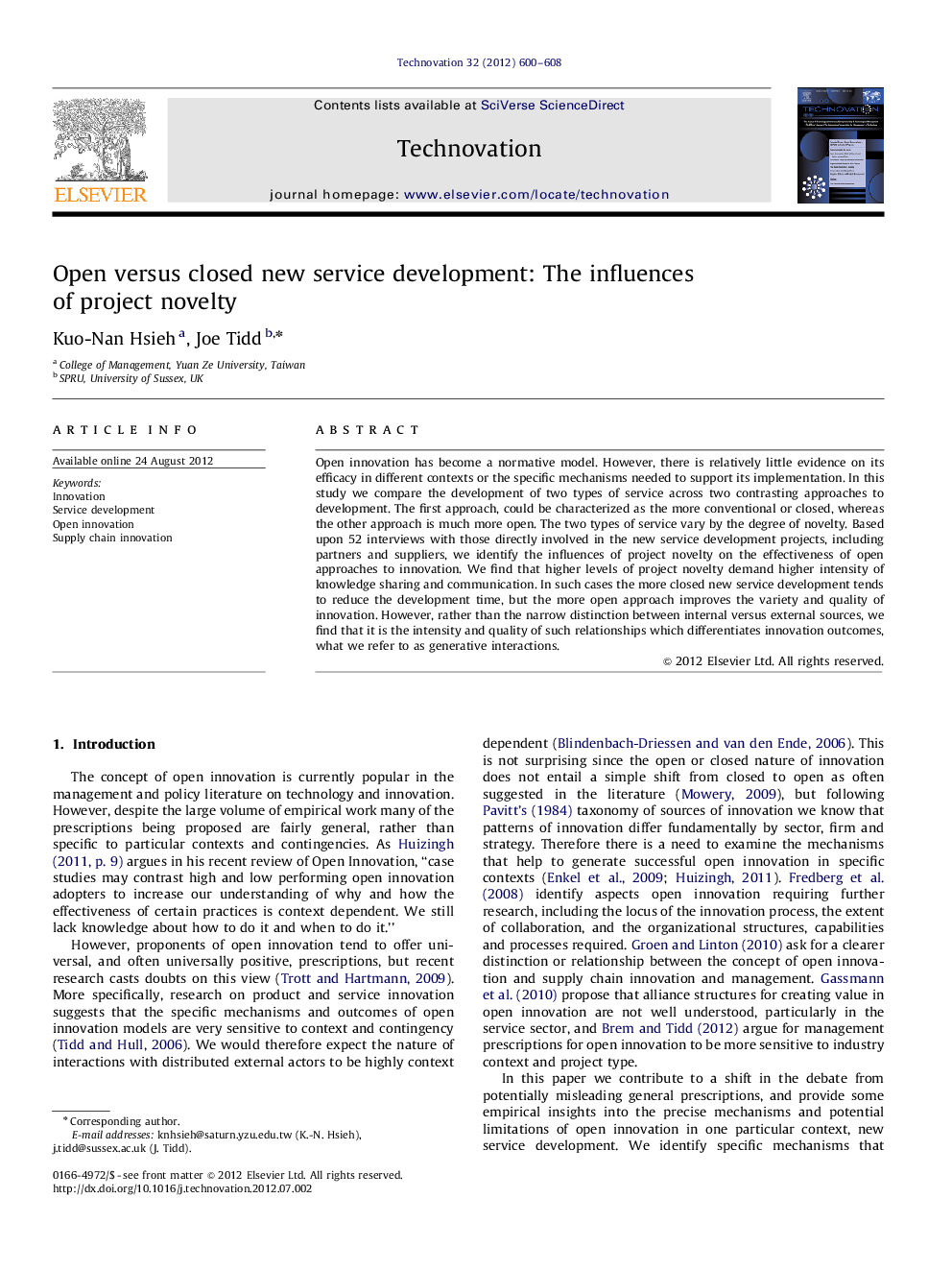| Article ID | Journal | Published Year | Pages | File Type |
|---|---|---|---|---|
| 1022145 | Technovation | 2012 | 9 Pages |
Open innovation has become a normative model. However, there is relatively little evidence on its efficacy in different contexts or the specific mechanisms needed to support its implementation. In this study we compare the development of two types of service across two contrasting approaches to development. The first approach, could be characterized as the more conventional or closed, whereas the other approach is much more open. The two types of service vary by the degree of novelty. Based upon 52 interviews with those directly involved in the new service development projects, including partners and suppliers, we identify the influences of project novelty on the effectiveness of open approaches to innovation. We find that higher levels of project novelty demand higher intensity of knowledge sharing and communication. In such cases the more closed new service development tends to reduce the development time, but the more open approach improves the variety and quality of innovation. However, rather than the narrow distinction between internal versus external sources, we find that it is the intensity and quality of such relationships which differentiates innovation outcomes, what we refer to as generative interactions.
► We compare new service development across two groups of company, one closed and one open. ► We explore the influence that the novelty of the service has on the intensity of collaboration. ► Our research is based on 52 interviews with internal and external developers. ► We find that the simple distinction between open and closed innovation is insufficient. ► We find that the intensity of relations with suppliers and partners is more critical than openness.
